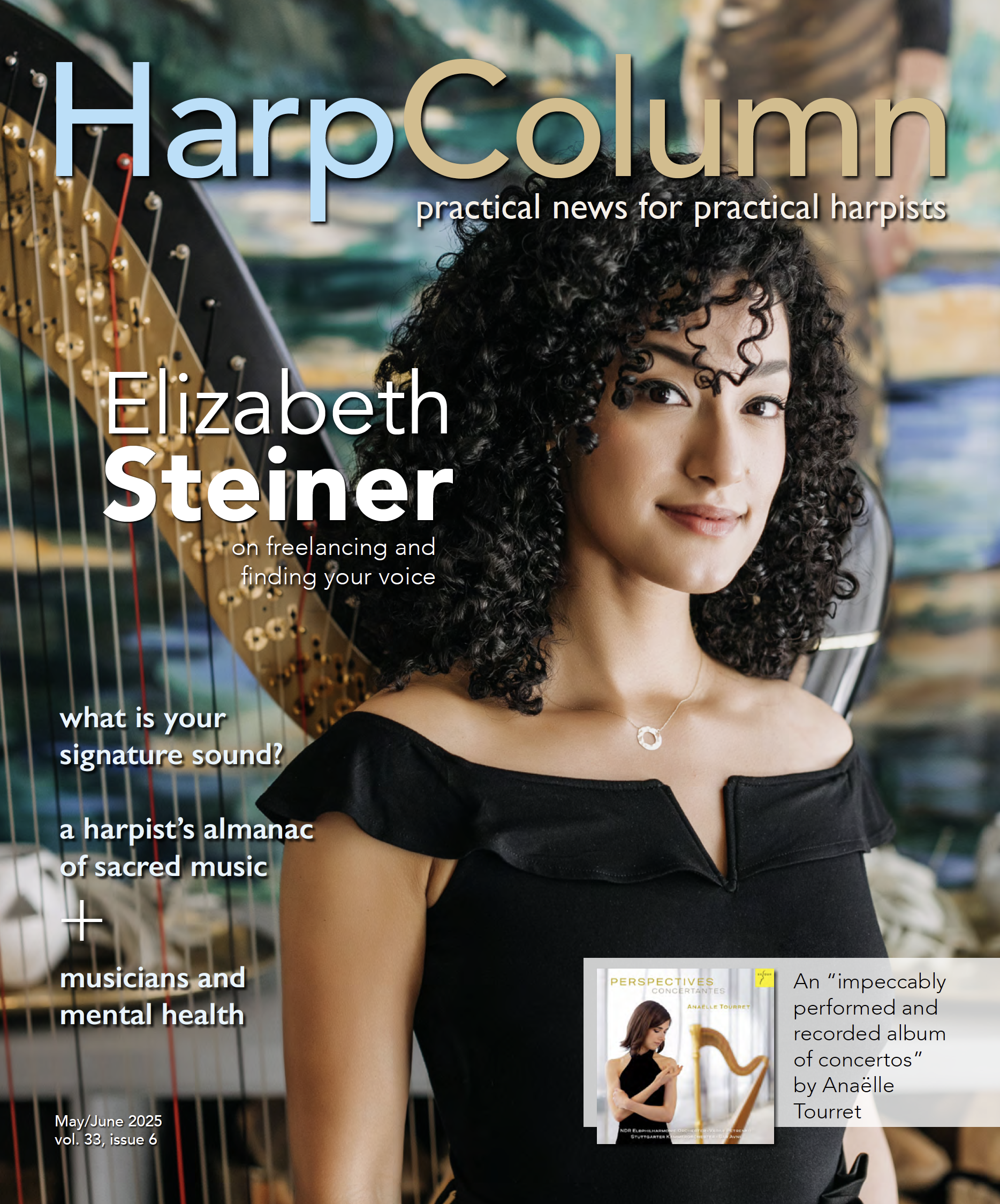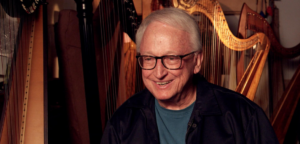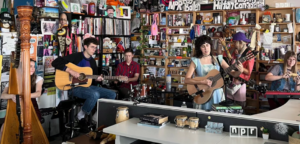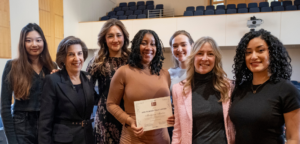Harpist and composer Ben Creighton Griffiths will premiere his own jazz harp concerto with the Chandos Symphony Orchestra on March 19, 2023, in Malvern, England. Based in South Wales, Creighton Griffiths is involved in musical projects in both jazz and classical genres, as a soloist and with jazz ensembles he co-founded, such as the Transatlantic Hot Club (a hot club-style jazz ensemble) and Chube (an electric jazz fusion trio). We reached out to him to learn more about his composition project.
Tell us how this project to write a jazz harp concerto came about.
Over the summer I was asked by the Chandos Symphony Orchestra, one of several symphony orchestras I freelance with, if I would like to perform a harp concerto with [the orchestra in its] 2023/2024 season. I suggested some of the usual concerto repertoire, but I also proposed that I could write a jazz harp concerto if they fancied something rather different from the usual works. I was delighted that they came back to me saying that it was something they’d be very interested in.
What is the musical framework of your concerto, or what are some of the musical ideas behind it?
As a jazz harp concerto is always going to be a rather unusual work in nature, I’ve not gone with the traditional three-movement format. Instead, it’s more of a suite with five movements that all go through different jazz subgenres. The opening movement is a prelude in 5/4 rooted in a quite modern feel, the second a Balkan Waltz, the third a jazz ballad, the fourth a Latin movement with Samba and Son Montuno influences, and the final movement is a 1930s Jive and Blues.
In the writing process I wanted to ensure a balance between the obvious jazz influences and classical orchestral writing. In terms of the overall style and sound, I didn’t want to create something too experimental and wanted to ensure the work could fit in with more traditional programming rather than needing to be reserved for more alternative occasions and audiences. I wanted the work to sit in a similar category to works by composers such as Gershwin and Bernstein or albums such as the Yehudi Menuhin and Stéphane Grappelli duet album Tea for Two. Additionally, I have plans for a future orchestral work with my fusion band Chube that would be far more “out there” than this and lean more into my electronic fusion/rock work. This work is both a steppingstone and stylistic bridge to that next work.
A big musical consideration with [the concerto for the Chandos Symphony Orchestra] was approaching how to get the work to really groove as a jazz band would—the jive has to swing and the Latin grooves have to be really snappy. To do this, I had to consider how to create a rhythm section within the orchestra—and so I’ve covered this in two ways. Firstly, I’ve added a full drum kit to the orchestration that will play exactly as the drummer in a traditional jazz band would—and I’m very happy that my drummer from Chube, Jon Bradford-Jones, is not only working with me on writing the part for kit but he is also going to be performing it at the premiere next year. Secondly, instead of extending the orchestra even further by adding a piano and electric bass to provide the rest of the rhythm section, the harp will be used as an accompanying instrument by providing some sections with a walking bass line and right-hand comping patterns.
Considering the above, I wanted the harp to be amplified for this work. We all know the difficulties of balancing a full symphony orchestra with any solo instrument, let alone a harp, but I didn’t want to lose the overall power that a symphony orchestra can generate. The amplification of the harp allows it to be as strong as needed to match a symphony orchestra in full flow, and also allows for more percussive and powerful timbres from the harp when providing the walking bass and comping.
How have your past jazz arrangements influenced your compositional process for the concerto?
Some of the core ideas used in the concerto are melodies or chord progressions that I’ve had written down for a while in various half-written projects for solo harp or smaller ensembles that I never quite found the right purpose for—a situation most composers will be familiar with! An example of this is that the main melody of the Latin movement was originally written for a demo track for Chube’s first EP that never made it onto the recording, as it didn’t stylistically fit with the rest of the tracks. However, the resulting composition is wildly different to what that track originally was going to be, because of how different the ensembles are.
The actual compositional process on this work has had to be a lot stricter than most of my writing in the past. All of the tracks I write for Chube are performed by experienced jazz musicians who spend a significant amount of time playing our style of music—so I only have to write the melodies, a rough harmony guide, and then I just say to the bass and drums to groove in a certain way, and they fit in and adapt my rough guides with their expertise of their instruments. This is of course how jazz bands work (my Transatlantic Hot Club is the same with interpreting hot club-style jazz standards), but it is entirely impractical for a full classical orchestra. I’ve had to really think about how I specifically mark every single phrase as of course the orchestra will play exactly what’s written on the score exactly as it’s been written, and not just interpret the style based on my descriptions. Whilst this has been a challenge, and of course I won’t really know how successfully I’ve done this until we start rehearsals next year, I think it’s been of great benefit as I’ve had no choice but to really understand the natural stylistic things we jazz musicians just do in our playing and how to explain it on the manuscript.
Will your concerto include an improvisation section, or will everything be prearranged?
There’s extensive improvisation within the work. All five movements have a solo improvised section for the harp over the form just as a jazz standard would, with the rhythm section provided by a combination of various orchestral elements and the drum kit as well as the left hand of the harp. The areas where the harp acts as the rhythm section will also have an element of improvisation – although the score will have written out basslines and chords, I won’t be playing exactly what’s there. Also, the opening of the entire concerto will be an entirely solo free improvisation section leading into the 5/4 prelude. When I say free it’s completely free, I’ll be coming up with the whole idea of it right on the spot and it will be vastly different every time I perform it.
Once the premiere of the work is given next March, I plan on publishing two versions of the concerto. The first will be basically what I’m going to perform off – which is actually not far off a half blank score as there’s so much improv! The second version will take some time to produce, but I will write a fully scored harp part with a “canon” introduction and improvisations so that it can be performed without any improvisation needed. I hope that this will appeal as a genuine programming option to classical concert harpists looking for a different concerto to perform.
What is it like writing a concerto as a harpist?
I’m not so sure that my experience is quite so typical as it’s a fairly unusual take on a concerto, but it’s certainly very interesting and also challenging writing for such an extended group of instruments. I’ve certainly had significantly more elements to juggle and think about than in previous works, but actually I think there is great benefit to being a harpist or pianist and writing for larger ensembles like this. This is because, as a grand staff instrument, we are constantly learning works with multiple layers and lines woven throughout the music, and so in a way I believe you can approach each section of the orchestra in the same way you might write for a harp or piano. In that respect it’s almost like writing for five harps—but each one is fulfilled by the different orchestral sections, with the final one taken by the solo harp itself.
How will you showcase the harp in this work?
As with more standard concertos, there are extended sections that feature the harp both entirely solo and also very prominently leading the orchestra—both with the melodies and improvisations as well as with more accompaniment-like sections. My goal with this work, however, is to showcase the alternative, jazz side of the instrument (across a broad spectrum of jazz subgenres) and to continue to make the growing statement that I and the other fantastic jazz harpists are making that the harp isn’t just for classical work.
What has been the most rewarding aspect of composing a jazz concerto for harp? What challenges have you encountered?
It’s been rewarding to see the work take shape in front of me and to hear the ideas that have floated around inside my head translate to the harp. The most rewarding moment will surely be hearing it being played by the orchestra for the first time rather than just the MIDI playback, though I must wait a little while longer for that!
The biggest challenge has certainly been in writing for the instruments that I’m not so familiar with. As mentioned earlier in this Q&A, although many of my compositions have a lot of percussion or drum writing, I’ve never really had to construct the specifics of a part and write it down. I’ve been grateful that Jon has helped me out on how to transcribe what I’m hearing in my head to the page. Wind, strings, and brass I have written for before, but not on this scale and quantity, and working out how to weave the timbres and lines together has been the challenge there. There’s certainly a temptation to overscore the orchestral parts, and from my experience playing in an orchestra, the most effective writing tries to use a variety of textures.
Is there anything else you’d like to tell us about your new concerto?
The premiere will be on March 19th at the Forum Theatre in Malvern, England. The tickets for it will be out very soon, and it would be lovely to see lots of harpists there! I hope to release the sheet music sometime next summer, and more details about this will be on my website and Facebook page nearer the time.
Check out our cover interview with Creighton Griffiths at the very start of his career from the March/April 2013 issue of Harp Column.












